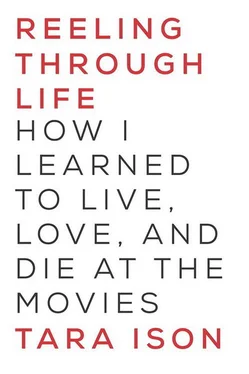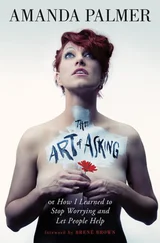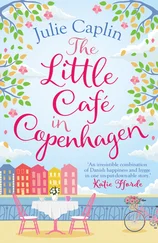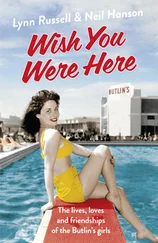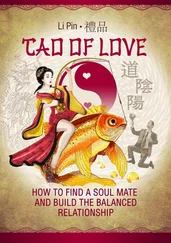Math genius John Nash, while a student at Princeton, is desperate to “distinguish himself” by coming up with a truly original idea — he does, eventually, something about governing dynamics that’s referred to (but never explained) as his “equilibrium,” the idea that forty years later he’ll win the Nobel Prize for. His hope to distinguish himself this way proves to be only half accurate — how many Nobel Prize — winning mathematicians can you name? Who aren’t also famously schizophrenic? It is, alas, his craziness that distinguishes him enough to have the big Oscar-bait movie made about him; sitting in the theatre, I can almost hear the acceptance speech.
But while still a young, Nobel-less mathematician, Nash begins working undercover for black fedora — wearing William Parcher, trying to break Russian codes for the U.S. government. He also meets and marries a beautiful and brilliant graduate student in mathematics, Alicia, who from the day of the wedding never again mentions another word about math. Nash becomes increasingly obsessive about his undercover work until, finally, he has a paranoid meltdown onstage at a math conference; he is tackled, and Christopher Plummer appears, murmuring in that Plummery way of his that’s so uniquely soothing and menacing and seductive, all at the same time.
Christopher Plummer is Dr. Rosen, a psychiatrist, and we cut to his office, where Nash is shackled and drooling (Thorazine) and it’s revealed that both Parcher and John’s college roommate Charles (and Charles’s sweet little niece, Marcee, whom we’ve seen earlier) are, in truth, delusions. Nash is a full-blown paranoid schizophrenic, and who knew? I love this part of the movie; I knew from the first sight of Parcher the character was a delusion, that Nash is going nuts, but the movie faked me out on Charles and Marcee, and I am right there, on the floor of the doctor’s office with John, confused, suspicious, roiled. There’s nothing unnerving about this to me, however — I don’t identify with John’s craziness (he’s one of those real wackos), it’s just a good directorial trick of shifting perspective.
And then Nash is led into that windowless white room, berobed and frightened; he’s quite thoroughly strapped down on a cot with leather and buckles, a rubber guard is gently placed in his mouth, and I know what is coming. “Bathroom,” I whisper to my friend, and I slink wimpily out to go wash my hands. I return a few moments later; Nash is back home with the loyal Alicia and their new baby; he’s swallowing two bright pink pills every day, he’s thick-tongued, fog-brained, and impotent, and getting fed up. He is normal, but dulled. Unbeknownst to Alicia, he stops taking his meds. But we know it, this time, and so we’re increasingly on edge, waiting for it, waiting for it. . A few scenes later Alicia comes upon John about to drown their baby in the bathtub; she races to call Dr. Rosen, as Parcher and Charles urge John to stop Alicia, kill her, she’s looking to destroy him! John poises to attack. Alicia is about to escape with the baby when John has an abrupt slam of rationality; it hits him that in all these past years, little Marcee has never grown older. He surrenders. Dr. Rosen wants him back in the hospital immediately, but John refuses; he argues he can reason his way to a steady sanity without the torture of treatment, without the brain-deadening meds. Alicia has to make the choice: She refuses to sign the commitment forms, she puts her hand on John’s face and his hand on her heart and tells him “ This is real.” Big. . Awww s from the audience.
At that moment, I want to leave the theatre again. Not to avoid yet one more scene of electroshock — but because I am now appalled by the lesson of this movie. The woman has a child and the mentally ill man she lives with hears a fake man in a black hat telling him to kill. But no, stay with your schizophrenic and dangerous-by-any-objective-standard husband who refuses his pink pills, stay at any risk to your own life or the life of your child. That’s beautiful. That’s what a woman, a wife, a loving spouse, should do — it’s what’s noble, admirable, what will move us to tears, make us Aww and applaud. Ah, the power of love.
But this is a terrifying, horrendous idea. John himself tells her she should leave, that it isn’t safe for her or the baby to be around him — suddenly the paranoid schizophrenic is the only person in the movie making sense. How can you not leap to aggressive action, how can you not take charge, control, when a person you love ceases to be the same person, is possessed by a soul-sucking demon, has transformed into a peril or a shell? I desperately want her to sign those papers and lock him away, before tragedy strikes.
But it all works out okay for the Nashes. An extended montage skips us ahead thirty-plus years, and no one is drowned, no one is attacked or killed. John learns to snub his delusions and does mention, briefly, that he’s now taking some of the “new medications,” then accepts his Nobel with a tribute to his loving, loyal, patient wife.
And this brings me right back to loving this movie; I want to believe John is right —reject the needles, the pills, the hospitalization, don’t give away that part of yourself that distinguishes you. Embrace the devil in the soul, be the mad genius, at any cost; be Woolf and van Gogh. Fight the power. Fight the bland-faced, smooth-voiced people who tell you they can help and then strap you down. Don’t listen to the person too clinical or too caring. You can do it yourself. Pull yourself up, choose your course of action, get yourself back to Kansas. Learn and rehearse your lines, give the performance of a lifetime that will give you a lifetime. The movie’s message is dangerous; the movie’s message is inspiring.
I understand why John doesn’t want to take those pills, why Frances refuses to be “dull, average, normal,” why McMurphy can’t keep from igniting the oil fire of his personality before Ratched’s frigid gaze. Because what if it’s that tiny, tiny fragment of your beautiful mind that does hold your equilibrium or the true core of your identity? What if it’s the exact nerve cells of your uniquely mad genius that wind up with their circuitry scrambled to hell? What if Crazy Lisa is right? What if it’s the “disturbed” imaginations wherein lie the sonnets or sonatas, the equations, the chiaroscuros, the distinguishing spark? What are “ideas” without any “emotional energy” as juice? Memento ergo sum , and what if it’s precisely that off-kilter level of serotonin that allows you access to those memories that make you, you?
I watched the movie again the other day, and I realize I no longer identify at all with John, the crazy one; I identify with Alicia, with her dilemma. Her decision not to commit him is loving, humane, not passive denial — she’s the anti-Ratched, for she wants to empower, not control. And I realize I have no idea how my grandfather actually felt about my Aunt Edith, and those decisions that he had to make, time after time after time, to have her locked away. I know he resented the responsibility, yes, but — did he also do it out of genuine concern? Love? A hope that she would be cured? My Aunt Edith probably wasn’t going to kill anyone, but she might have wound up in a ditch, beaten or stabbed to death, or self-deadened with suicidal despair. Is it unloving, inhumane, to take away someone’s power to self-destruct? Isn’t that what we really should trust our loved ones to do? And hope they make the right choice? I have to wonder about this now from the other side: Faced with a crashing-and-burning loved one on my hands, would I be able to sign those forms?
Читать дальше
